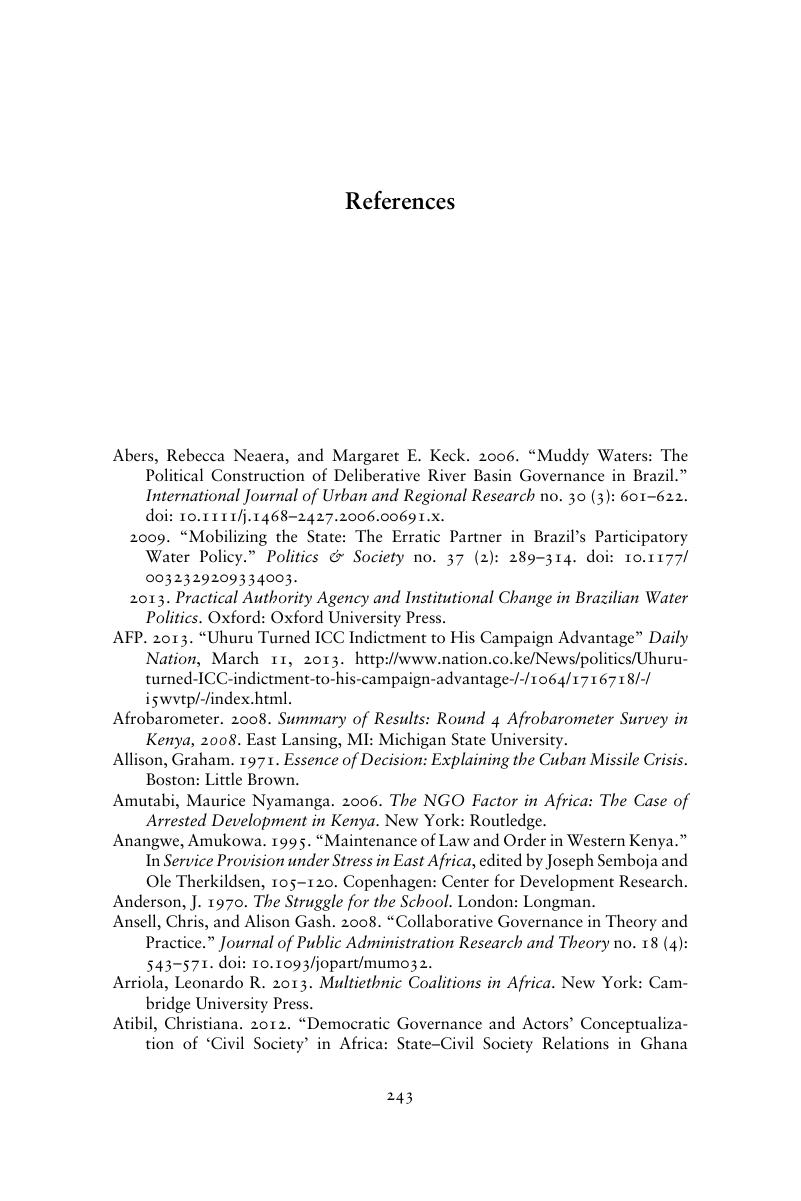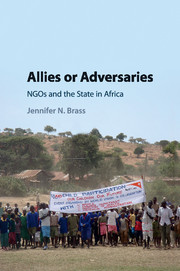Book contents
- Allies or Adversaries
- Allies or Adversaries
- Copyright page
- Dedication
- Contents
- Figures and tables
- Preface
- Acknowledgments
- 1 NGOs and state development
- 2 Theorizing NGOs and the state
- 3 Kenya as case study
- 4 Territoriality
- 5 NGOs’ role in governance
- 6 NGOs, service provision, and administrative capacity
- 7 Have NGOs decreased perceptions of state legitimacy over time?
- 8 NGOs
- 9 Conclusion: blurring the boundaries between NGOs and the state
- Appendix A Programs or projects by NGO interviewed
- References
- Index
- References
References
Published online by Cambridge University Press: 05 August 2016
- Allies or Adversaries
- Allies or Adversaries
- Copyright page
- Dedication
- Contents
- Figures and tables
- Preface
- Acknowledgments
- 1 NGOs and state development
- 2 Theorizing NGOs and the state
- 3 Kenya as case study
- 4 Territoriality
- 5 NGOs’ role in governance
- 6 NGOs, service provision, and administrative capacity
- 7 Have NGOs decreased perceptions of state legitimacy over time?
- 8 NGOs
- 9 Conclusion: blurring the boundaries between NGOs and the state
- Appendix A Programs or projects by NGO interviewed
- References
- Index
- References
Summary

- Type
- Chapter
- Information
- Allies or AdversariesNGOs and the State in Africa, pp. 243 - 268Publisher: Cambridge University PressPrint publication year: 2016



